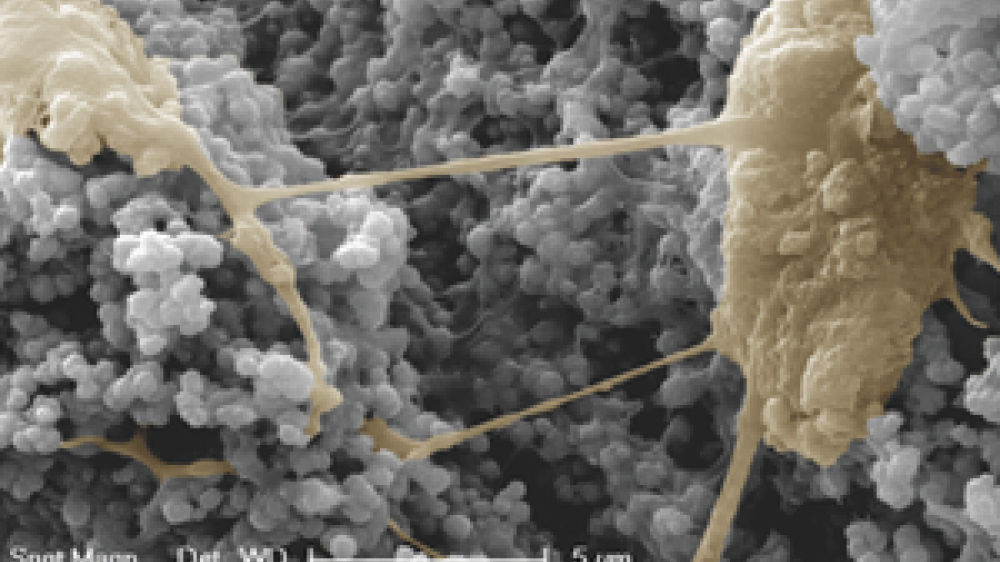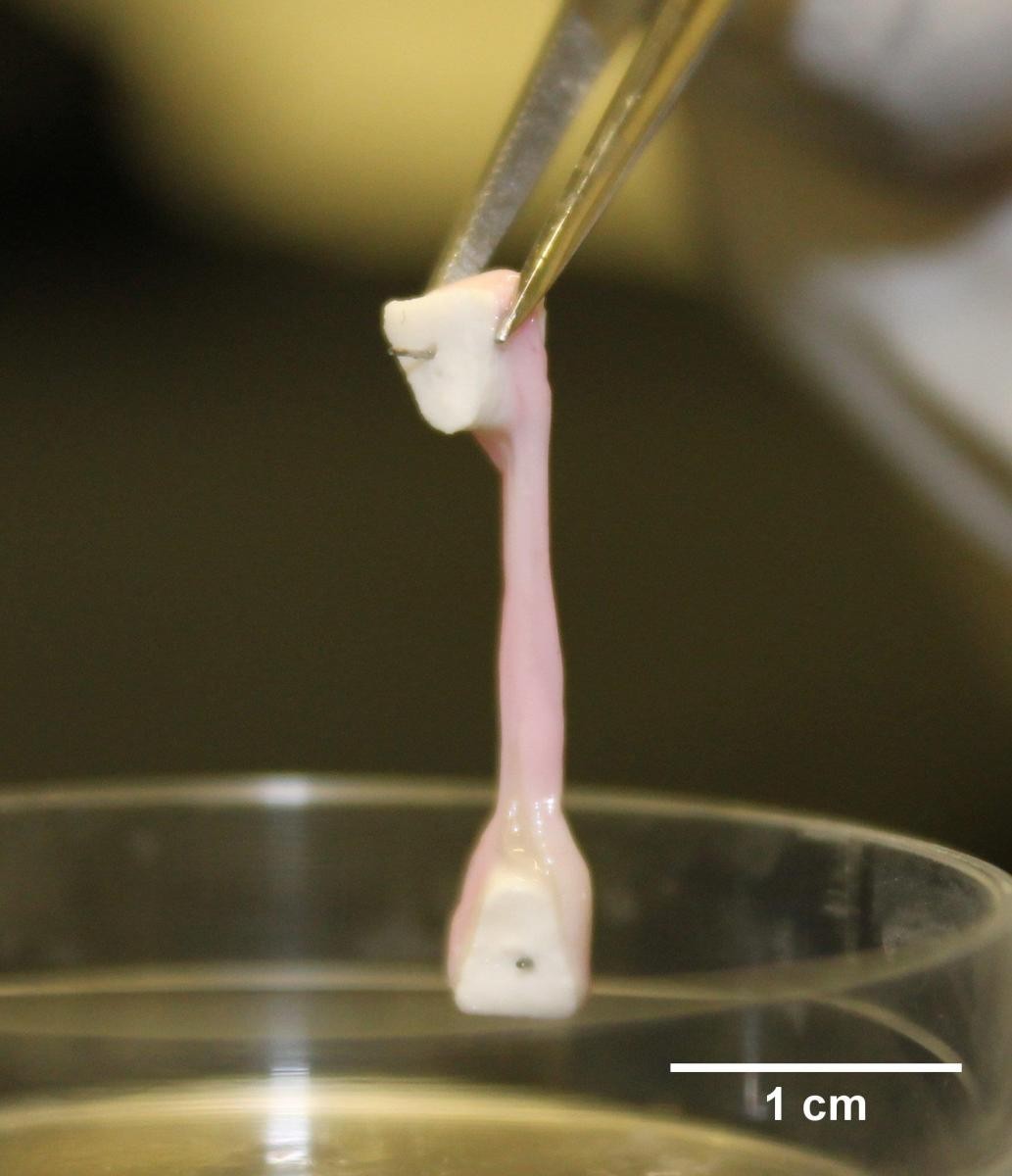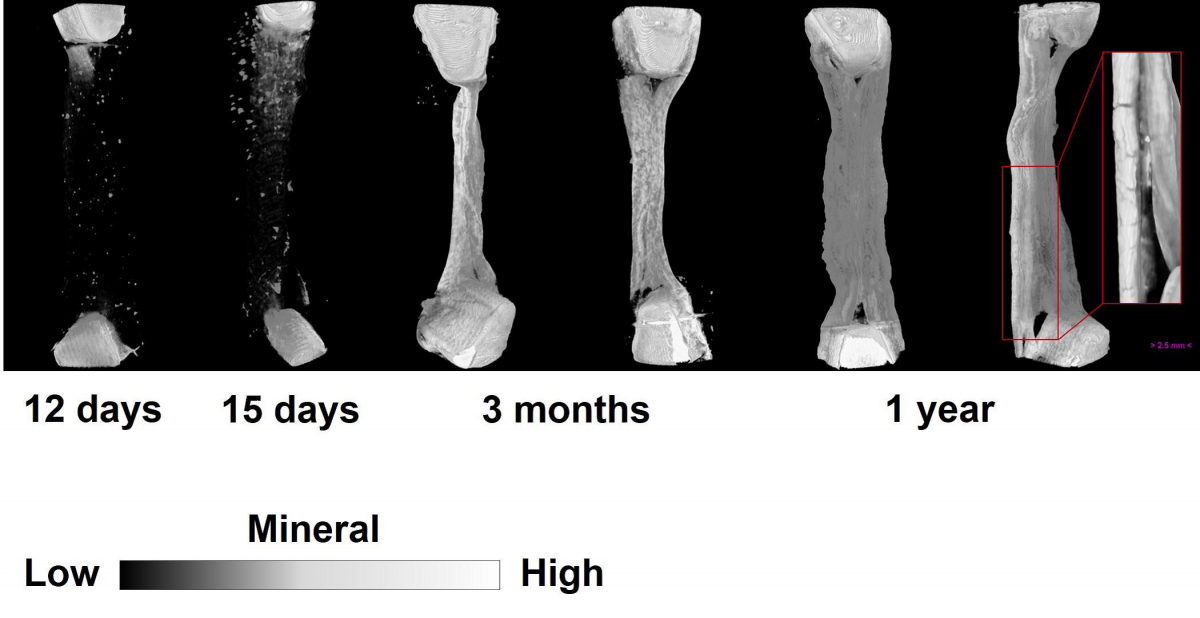Modelling bone formation and maturation in vitro

Researchers from the Universities of Birmingham and Oxford, funded by the NC3Rs, have developed a new self-structuring model of bone tissue in vitro that can be used instead of experiments on live animals to study bone formation and maturation (ossification).
The model is described in a publication in Advanced Biosystems.
The process of ossification is studied to understand normal bone development and repair as well as bone disorders. Current animal models of ossification often involve the use of genetically altered mice that are prone to pathological mineralisation. Depending on the experiment, bone fractures may have to be introduced. Differences in bone metabolism and volumes of bone formation between species can mean that mouse models generally provide a limited approximation of ossification in humans. In addition, differences in protocols and inducing agents (such as osteogenic factors or different levels of trauma) mean that the results obtained from animal models can be inconsistent or difficult to compare.

Recreating bone tissue in vitro has been challenging to date because of its anatomical complexity and its continuous remodelling in response to local stimuli. In addition, the mature bone cells, osteocytes, are difficult to differentiate in vitro and although there has been recent success in culturing osteocytes in 3D, these lack the close recapitulation of complex in vivo conditions required. The new model developed by Professor Liam Grover and Dr Alexandra Iordachescu from Birmingham University, Dr Philippa Hulley from Oxford University and colleagues simulates the architecture of real bone for the first time.
The team seeded rat femoral osteoblastic cells into fibrin gels. By maintaining in a culture environment that provides tensile force, a continual source of calcium phosphate and osteogenic factors, the cells deposited an ordered matrix that closely resembles mature bone in terms of its chemistry and structure. Importantly, cells differentiated to the osteocyte phase are linked by canaliculi and remained viable for a year in culture. This real tissue length time scale means that the bone constructs are amenable to a range of studies and preliminary experiments by the team have shown that they can be used for screening novel compounds that might influence the ossification process. Additional work performed with human primary osteoblastic cells also suggests that the model can be adapted.

Development of mineralisation over time visualised by tomography. (Iordachescu et al. 2017)
References
-
Iordachescu A, Amin HD, Rankin SM, Williams RL, Yapp C, Bannerman A, Pacureanu A, Addison O, Hulley PA, Grover LM (2017). An In Vitro Model for the Development of Mature Bone Containing an Osteocyte Network. Advanced Biosystems Vol. 1, Issue 12. doi: 10.1002/adbi.201700156
